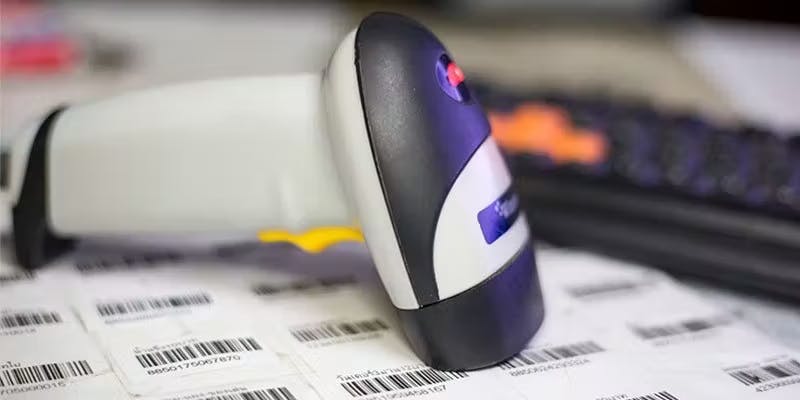Amazon Transparency – Combating counterfeiting with transparency
Published on by Matthias Habel

Amazon is the world's largest online retailer. In Germany alone, there are over 55,000 active retailers (as of 2016). These offer more than 229 million products in over 35 main categories on the German market. Amazon is therefore an attractive target for counterfeiters.
The problem with counterfeit products
The basic principle behind how Amazon bundles this wealth of products offered on its platform is simple. Unlike eBay, where each listing is assigned its own eBay item number, Amazon assigns each product an individual identification number – the Amazon Standard Identification Number (ASIN for short). Any retailer who wants to sell this product on the Amazon Marketplace must necessarily offer it under the same identification number. However, there are a large number of competitors on the Amazon Marketplace who sell the same products. As a result, several retailers usually attach their offers to a product, and ultimately the price war decides the sale. Since Amazon wants to counteract monopolization through this bundling, this approach is completely unproblematic.
It becomes problematic for both retailers and customers when counterfeiters use the same ASIN to sell inferior knockoffs. In addition to negative customer reviews, this can even result in legal action. The company itself states that it does not tolerate counterfeit products. According to the terms and conditions of participation, such products are prohibited on the Amazon Marketplace. However, it has not yet been possible to completely prevent counterfeit products on the platform. According to Amazon, however, it is "the responsibility of the seller and supplier to source, sell, and ship only authentic products." Amazon has been criticized on several occasions for the fact that the principle of personal responsibility applies on the Amazon Marketplace and that brand owners must independently monitor the use of their own brands by third parties.
The Birkenstock case
A prominent case occurred at the end of 2017: The traditional German manufacturer Birkenstock left the German Amazon marketplace at the turn of 2018. The company had already withdrawn from the US marketplace in 2016 due to repeated product counterfeiting. The manufacturer justified its withdrawal by citing a breakdown in trust with Amazon. The US corporation had not done enough to prevent legal violations on the marketplace. Birkenstock had expected Amazon to eliminate and prevent legal violations independently and without being asked to do so. However, the online giant had "not taken the initiative" to prevent counterfeit products from being sold on the marketplace. Ultimately, the management duo of Bensberg and Reichert decided to sever all business ties with Amazon. Since then, the company has stopped supplying the online store worldwide.
However, even though Amazon has so far only removed legal violations once a rights holder reports them, Amazon supports retailers with various tools for monitoring their own brand and tracking possible legal violations. Amazon brand registration has been offering protection on several levels to owners of word marks and/or word/figurative marks since May 2017. This allows them to "protect their intellectual property and create a correct and trustworthy experience for their customers on Amazon" on the online trading platform. Registration is definitely worthwhile, as trademark owners also receive exclusive writing rights with regard to all product descriptions and images distributed under the trademark. This also helps to protect the image of the trademark.
Amazon Transparency
Amazon is constantly working on new technology-driven solutions to increase transparency and protect brands and customers from counterfeits. With Transparency, Amazon has recently launched its new item-level authentication service: using uniquely generated codes, Amazon, brand owners, customers, and other supply chain stakeholders can authenticate each product unit. According to Amazon, unique authentication of each product unit is "the most effective way to combat and prevent counterfeiting across the entire supply chain."
A key factor in the authentication process is that the Amazon Transparency Code is unique for each product: to ensure that the product is not counterfeit, Amazon scans the codes as soon as products participating in the Transparency program are delivered to a fulfillment center. If a duplicate code is discovered, Amazon immediately removes the counterfeit goods from circulation and destroys them. Transparency also enables customers to verify authenticity, regardless of whether the product was purchased from Amazon, another online store, or a brick-and-mortar retailer. Customers can use the free Transparency app to check the code on the product. The app verifies the authenticity of the product and, if authentication is successful, also displays the stored information at the item level.
Conclusion
The program has already been tested with promising results in the US. With over 4,000 participating brands and over 300 million codes generated, Amazon was able to proactively remove 250,000 counterfeit products from circulation. Transparency has now been extended to Amazon marketplaces in Germany, France, Italy, Spain, the UK, India, and Canada. To register with Transparency, brand owners must have a Global Trade Item Number (GTIN), such as an EAN or UPC barcode, affixed to their products. Amazon then generates unique Transparency codes for each item, which must be affixed to the respective product unit in addition to the GTIN. The 26-character encrypted identification number is unique for each item. In addition to the date and place of manufacture, it contains additional product information such as materials and ingredients used. As a specialized Amazon agency, we provide comprehensive advice on this topic.
Related Posts


